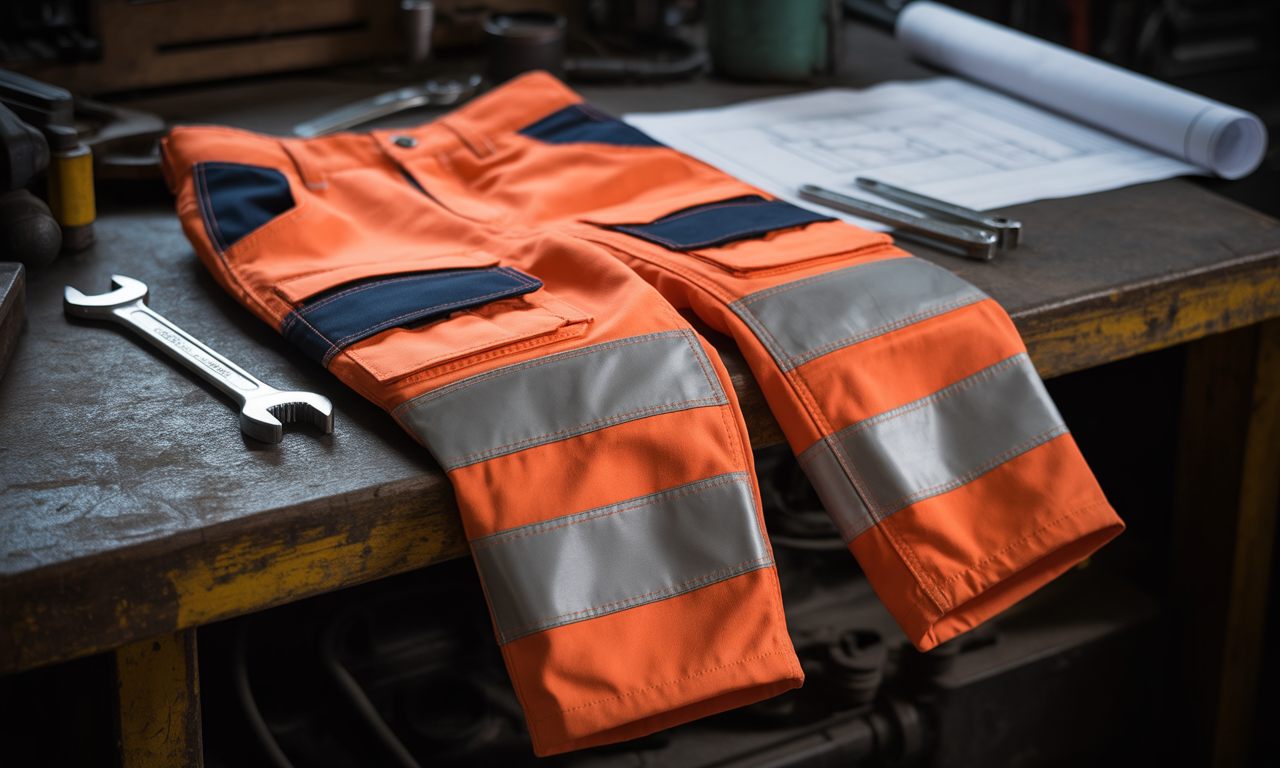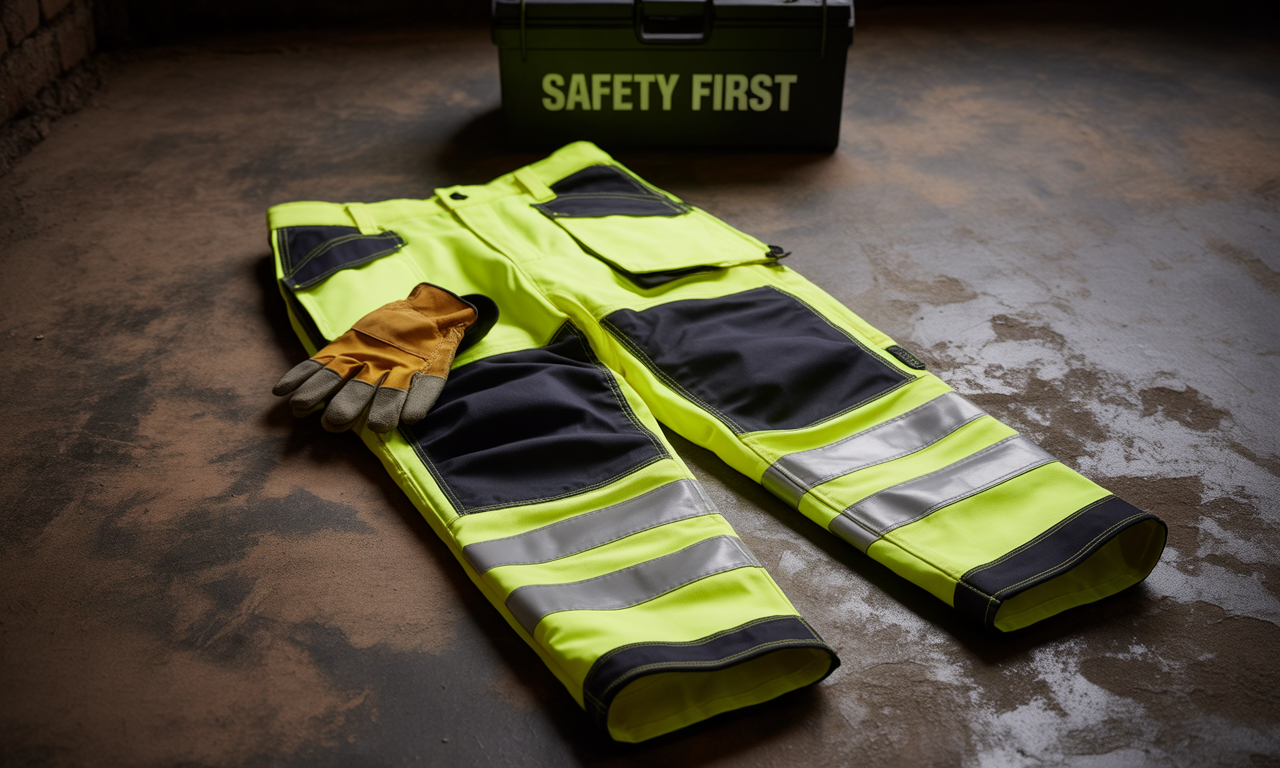Top Industrial Safety Pants and Protective Workwear Clothing Solutions for Workplace Protection July 2025
 In the fast-evolving industrial landscape of 2025, workplace safety remains paramount, especially when it comes to protective clothing. Industrial safety pants and protective workwear are critical for safeguarding workers from hazards such as chemical spills, sharp objects, extreme temperatures, electrical currents, and mechanical injuries.
In the fast-evolving industrial landscape of 2025, workplace safety remains paramount, especially when it comes to protective clothing. Industrial safety pants and protective workwear are critical for safeguarding workers from hazards such as chemical spills, sharp objects, extreme temperatures, electrical currents, and mechanical injuries.
Why Industrial Safety Pants Are Essential
Industrial safety pants serve as a frontline defense against a variety of workplace hazards. Unlike regular clothing, these pants are engineered with specialized materials and design features to offer enhanced durability, protection, and comfort.
Key Hazards Addressed by Industrial Safety Pants:
- Chemical Exposure: Pants made with chemical-resistant fabrics prevent harmful substances from penetrating the material and contacting the skin.
- Heat and Flame: Flame-retardant (FR) pants reduce the risk of burns and injuries in industries like welding, oil and gas, and electrical work.
- Cut and Abrasion: Reinforced and cut-resistant textiles protect workers in metal fabrication, construction, and manufacturing.
- Visibility: High-visibility pants with reflective tapes improve worker safety in low-light environments or heavy traffic zones.
- Electrical Protection: Arc flash-rated pants protect electricians and utility workers from electrical burns and shocks.
Top Materials Used in Industrial Safety Pants
In 2025, industry-leading safety pants incorporate advanced materials to meet stringent safety standards:
- Kevlar® and Dyneema®: Ultra-strong fibers used in cut-resistant pants offering high tensile strength.
- Nomex® and Proban®: Flame-resistant fabrics that maintain protective properties even after multiple washes.
- Polyurethane (PU) Coatings: Provide chemical and water resistance without sacrificing flexibility.
- High-Tech Blends: Combinations of cotton, polyester, and elastane provide durability, breathability, and stretchability.
Latest Trends in Workwear Clothing Solutions
Innovation in workwear continues to focus on balancing protection, comfort, and functionality:
1. Smart Workwear Integration
- Workwear embedded with sensors to monitor vital signs, detect hazardous gases, or send alerts in emergencies.
2. Sustainable Fabrics
- Use of recycled materials and eco-friendly manufacturing processes reflecting growing industry commitment to sustainability.
3. Modular and Multi-Functional Designs
- Pants featuring detachable or adjustable components (like reinforced knee pads, pockets, or ventilation panels) adapted to work conditions.
4. Ergonomic and Lightweight Designs
- Weight-reducing fabrics and anatomical tailoring improve mobility and reduce worker fatigue.
Leading Industrial Safety Pants Brands of 2025
Here are some notable brands and their hallmark features in safety pants for industrial workers:
Carhartt Workwear
- Heavy-duty, triple-stitched pants with durable duck fabric, reinforced knees, and flame-resistant options.
DuPont™ Tyvek® and Nomex®
- Industry-standard flame and chemical-resistant pants, widely used in hazardous environments.
Helly Hansen Workwear
- Offers high-visibility and waterproof pants with advanced insulation for cold environments.

Dickies Workwear
- Combines affordability and durability, with innovative fabrics designed for comfort and protection.
3M™ Protective Apparel
- Cutting-edge fabrics featuring reflective technology, chemical resistance, and arc flash protection.
Comprehensive Protective Workwear Solutions
Protective workwear extends beyond pants to include shirts, jackets, gloves, helmets, eyewear, and boots, designed to work in synergy for comprehensive safety. Employers are encouraged to adopt full outfit solutions tailored to the specific hazards of their workplaces.
Essential Protective Workwear Features:
- Flame Resistance: Standards like NFPA 2112 compliance.
- Chemical Resistance: Compliance with OSHA hazardous material handling guidelines.
- Visibility: ANSI/ISEA 107 certification for high visibility.
- Comfort and Fit: Adjustable waistbands, stretch zones, and moisture-wicking materials.
- Durability: Reinforcements at stress points and abrasion-resistant fabrics.
How to Choose the Right Industrial Safety Pants
Selecting the right industrial pants requires evaluating the specific hazards and working conditions:
- Hazard Assessment: Analyze risks such as chemical exposure, fire hazards, mechanical risks, and weather conditions.
- Material Selection: Choose appropriate fabrics and layers for protection and comfort.
- Fit and Mobility: Ensure the pants allow freedom of movement without compromising safety.
- Compliance: Verify the pants meet relevant safety standards and certifications.
- Maintenance: Consider ease of cleaning and durability to maintain protective properties.
Maintenance and Care Tips for Industrial Safety Pants
Proper maintenance extends the lifespan and effectiveness of protective workwear:
- Follow manufacturer washing instructions to preserve coatings and fabric integrity.
- Regularly inspect pants for wear, tears, and compromised protective areas.
- Replace pants immediately if safety features are damaged.
- Store in clean, dry environments to prevent degradation.
The Future of Industrial Safety Pants and Workwear
Emerging technologies foreshadow the future of protective clothing:
- Nanotechnology Coatings: Self-cleaning, stain-resistant, and even stronger protective layers.
- AI-Driven Personal Protection: Smart garments communicating with workplace safety networks in real-time.
- Bioengineered Fabrics: Sustainable yet high-performance materials grown through biotechnology.
- Augmented Reality (AR) Interfaces: Workwear integrating AR for hands-free information display.
Continual advancements will make industrial safety apparel more adaptive, intelligent, and sustainable.

FAQs About Industrial Safety Pants and Protective Workwear
1. What standards should industrial safety pants comply with in 2025?
Industrial safety pants should comply with standards like NFPA 2112 for flame resistance, EN ISO 11612 for protective clothing against heat and flame, ANSI/ISEA 107 for high visibility, and OSHA regulations relevant to the specific industry.
2. How often should safety pants be replaced?
Safety pants should be replaced immediately if damaged, contaminated, or if their protective qualities are compromised. Typically, with proper care, workwear might last up to 12-18 months depending on usage intensity.
3. Can safety pants be customized for different industries?
Yes, safety pants can be customized with additional reinforcements, pocket configurations, protective overlays, and high-visibility elements specific to industry needs like construction, chemical, or electrical work.
4. Are smart safety pants available in the market?
Yes, in 2025, smart safety pants equipped with sensors for monitoring worker health, environmental hazards, and location tracking are increasingly available from specialized manufacturers.
5. How important is comfort in industrial safety pants?
Comfort is crucial as it directly affects worker productivity and safety. Ergonomic designs with stretch fabrics, breathable materials, and proper fit reduce fatigue and increase compliance with safety apparel use.

